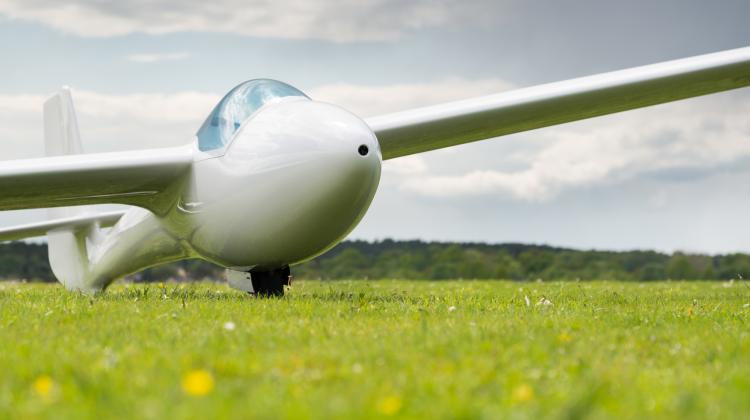Rzeszów University of Technology is building a motor glider with hydrogen propulsion
 Photo: Fotolia
Photo: Fotolia
Motor glider with hydrogen drive is being built at Rzeszów University of Technology. This is the next stage of research on alternative energy sources for aviation, conducted for several years. The motor glider is expected to be ready for the first independent flight by the end of 2018.
The hull of the AOS-H2 motor glider will house hydrogen cylinders and a hydrogen fuel cell that will generate electricity to power the engine. This type of propulsion will provide about 30 percent needed power and, for the time being, will supplement the batteries.
The construction of the AOS-H2 motor glider is yet another stage of research. A few years ago, Rzeszów University of Technology together with Warsaw University of Technology constructed a motor glider with electric motor (AOS-71). It was implemented in 2014 at the Glider Factory "Jeżów". Scientists have now added hydrogen cells to its power supply.
Work on the AOS-H2 hydrogen powered motor glider is carried out by a consortium led by Rzeszów University of Technology. The consortium members also include: AGH University of Technology in Kraków, Warsaw University of Technology and the Glider Factory "Jeżów". Research is conducted by a team of about 20 people led by Prof. Marek Orkisz from Rzeszów University of Technology.
As part of the project conducted since 2015, scientists have conducted research on electric motor power supply using fuel cells, mainly those that have high efficiency and are safe in operation during flight. As a result, they have designed and built the AOS-H2 hydrogen fuel motor glider.
This light aircraft uses an integrated electric drive system with fuel cells. Prof. Orkisz told PAP that the drive would be flight tested to assess its limitations regarding the use of hydrogen as fuel. According to the assumptions of the project, the machine should to be flight-ready by the end of this year.
"We will be happy if the motor glider performs a 20-minute flight with the propulsion on" - says Prof. Orkisz. He explains that this will open the way for scientists to improve the aircraft and search for solutions that will extend the flight time of the motor glider, among other things.
The AOS-H2 hydrogen-powered motor glider project is funded by the National Centre for Research and Development under the third competition of the Applied Research Program, the goal of which is to build an environmentally-friendly, pollution-free aircraft propulsion using fuel cells as a power source.
Professor Orkisz explained that the primary objective is the search for alternative aircraft propulsion systems that can be used in light General Aviation class aircrafts, such as: ultralight aircrafts, TMGs and business class motor gliders, and single and twin engine certified light aircrafts with a wide range of use. The results can be used by the domestic aviation industry.
According to the professor, currently only few aviation industry research centres in Europe and in the world conduct advanced research in this field.
"Small electric engines using fuel cells up to 150kW are a niche market. The construction of a series of such propulsion systems for single and twin engine light aircrafts and motor glider would provide development opportunities for domestic small aviation companies and increase the dynamics in this area of economy" - believes Prof. Orkisz.
PAP - Science in Poland, Agnieszka Pipała
api/ ekr/ kap/
tr. RL
Przed dodaniem komentarza prosimy o zapoznanie z Regulaminem forum serwisu Nauka w Polsce.















